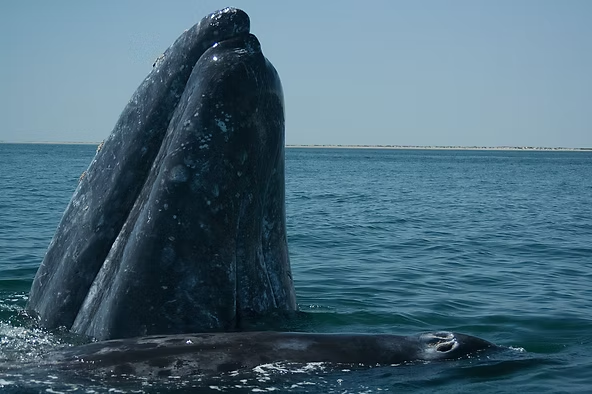Gray Whales: Giants of the North Pacific
Gray whales were once widespread across the Northern Hemisphere, but today they are found only in the North Pacific Ocean, split into eastern and western populations. Known for their aggressive responses when harpooned, they earned the nickname “devil fish.” Both populations nearly faced extinction due to commercial whaling, but international protections and a commercial whaling ban in the mid-1980s helped their recovery.
1. Baleen
Gray whales forage by dislodging small animals from the seabed using their noses. Their baleen—comb-like plates in the upper jaw—filters these morsels. Gray whale baleen, approximately 18 inches long, was historically used in corsets and umbrella ribs.
2. Migration
Gray whales are among the world’s most migratory animals. Some travel up to 12,430 miles round-trip, moving between summer habitats in Alaskan seas and winter breeding grounds in warmer Mexican waters. Migratory pods can also be observed near Korea. Whales spend winters in shallow southern waters, where temperatures are warmer.
3. Conservation
Once heavily hunted and near extinction, gray whales are now protected by law. Migratory groups are commonly seen along the west coast of North America. In 1994, gray whales were removed from the U.S. endangered species list as populations rebounded.
4. Feeding
Gray whales feed primarily on small crustaceans like amphipods, larval crabs, and mysid shrimps. They can feed at the surface, mid-water, or the seafloor, where they leave characteristic furrows in the mud. A gray whale may consume up to 1,200 kg of food per day. Interestingly, tagged whales prefer to roll onto their right sides while feeding.
5. Reproduction and Growth
Gray whales have a promiscuous mating system, with both sexes mating multiple times per season. Mating occurs during southward migration in late fall, and calves are born between late December and early March after an 11–13 month gestation. Mothers and calves remain together for 7–8 months, with calves consuming up to 1,800 liters of dense, high-fat milk daily. During northward migration, mothers keep calves close to shore (within 200 meters) to protect them from predators like killer whales.

